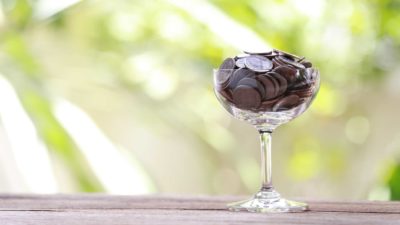Owning ASX dividend shares can be one of the most rewarding experiences on the share market. In contrast, growth shares like Afterpay Ltd (ASX: APT), which pay no dividend but promise a white-knuckle ride through ups and downs on the market, can be fun (and highly lucrative) in their own way.
But there's nothing quite like holding a dividend share, and getting paid every three or six months just for the act of not selling. One could even think of the whole process as a reward for laziness. Indeed, many investors invest in ASX shares solely for this purpose. Dividends can provide, or supplement, an income stream that one can use to retire on, or at least support a higher standard of living that one might aspire to.
But just how much do you need to have invested to generate, say, $50,000 a year in dividends – an amount roughly double the current Age Pension rate for a single person?
2 ends of the dividend stick
Well, it depends on your portfolio and the investments you make. You could have everything you own invested in an ASX dividend share like Fortescue Metals Group Limited (ASX: FMG), which currently offers a market-leading, trailing yield of 8.57%, or 12.24% grossed-up with full franking credits. Well, you would only need to invest $408,500 in Fortescue shares today to receive a dividend and franking credit stream worth $50,000 a year.
But that assumes Fortescue keeps its current dividends in place for time immemorial. That is a very flimsy assumption to make given the volatility of the price of iron ore that Fortescue mines. If iron ore hypothetically plummeted from the ~US$135 per tonne level we see today (historically very high) to US$50 per tonne next week, you could bet with near certainty that Fortescue would be slashing its dividends very quickly soon after.
That's why very few investors (if any) would actually have all of their money tied up in Fortescue (or any other single company for that matter).
So which ASX dividend shares to choose? If you wanted to target reliability instead of large (and volatile) raw yield, you might be drawn to Washington H. Soul Pattinson & Co Ltd (ASX: SOL) instead. Soul Patts has one of the best dividend records on the ASX, having increased its dividend payouts every year since the year 2000 (yes, that includes 2020).
But Soul Patts' current trailing dividend yield is just 2.09%, or 2.99% grossed-up. That means that instead of $408,500, you would need just over $1.67 million to secure an annual income of $50,000 a year in dividends and franking.
Balance is the key for dividends
Now, these are obviously two extremes. Most ASX dividend investors have a broad portfolio of shares, in order to balance individual company risk and increase diversification. So let's take a broad market exchange-traded fund (ETF) to use as a substitute for this scenario.
The Vanguard Australian Shares High Yield ETF (ASX: VHY) is an example. This fund holds 65 ASX dividend-paying shares across all sectors of the market, which, for illustrative purposes, is a fair substitute for representing a typical dividend portfolio. Vanguard tells us that this ETF has a forecast, grossed-up yield of 6.3% right now. So let's just take that number as a representation of this 'typical dividend portfolio'.
So, for an investment into this fund that would generate $50,000 a year in income, you would need an amount of $794,000 invested at this grossed-up yield figure. Naturally, the yields generated from any diversified portfolio of dividend shares can vary from year to year.
Of course, diversification is important in this scenario, and an ETF like VHY is not an actual substitute for a portfolio of individual dividend shares. If you think of the $794,000 figure as ~$40,000 invested in 20 different ASX dividend shares, you get the idea.
Foolish takeaway
At the end of the day, whether you're able to generate $50,000 a year in dividend income will depend on which ASX shares your dividend portfolio consists of. But you should probably 'aim high' in this case. And it's worth considering the old parable 'build your house on rock, not sand' when it comes to building your passive income from ASX dividend shares.









